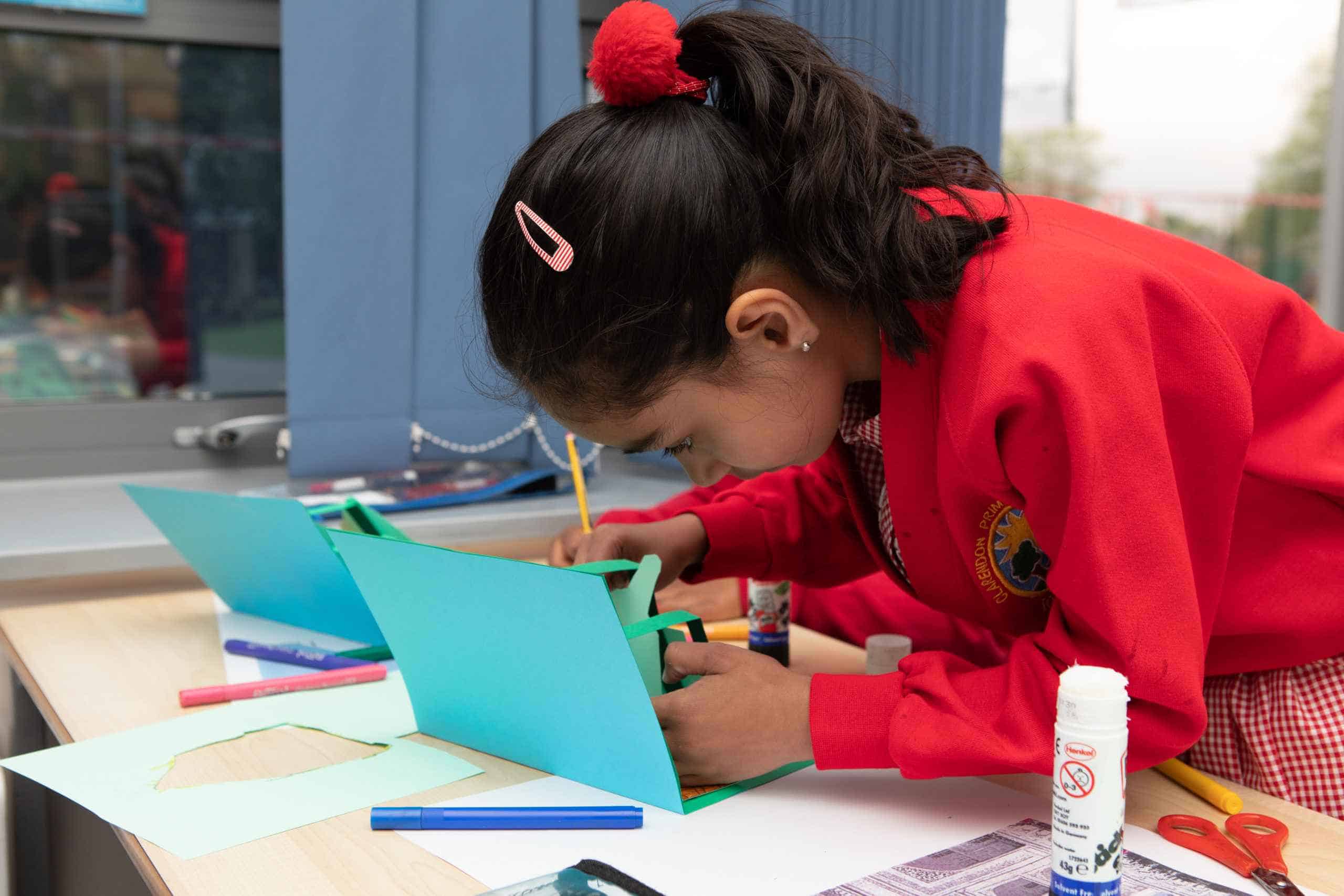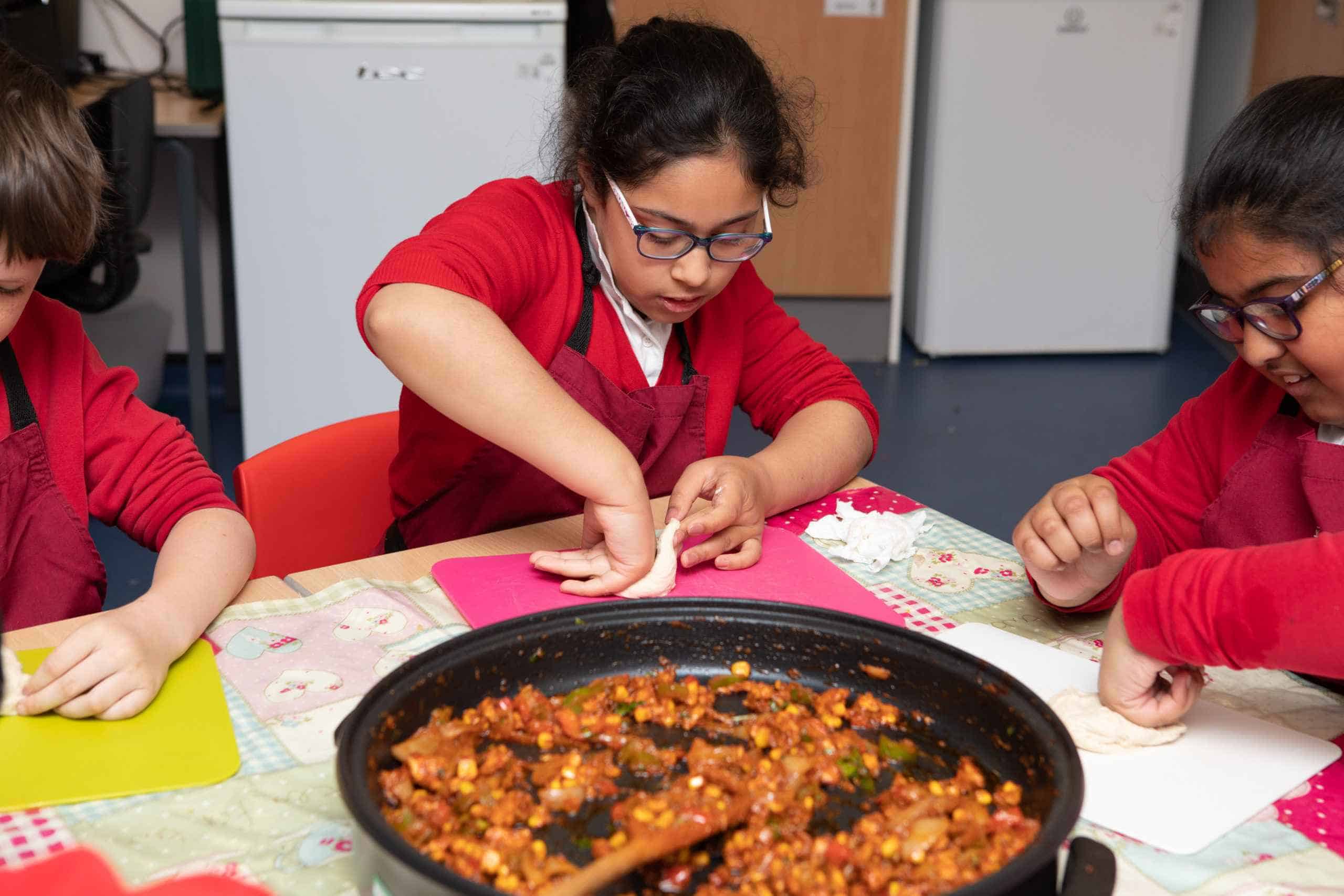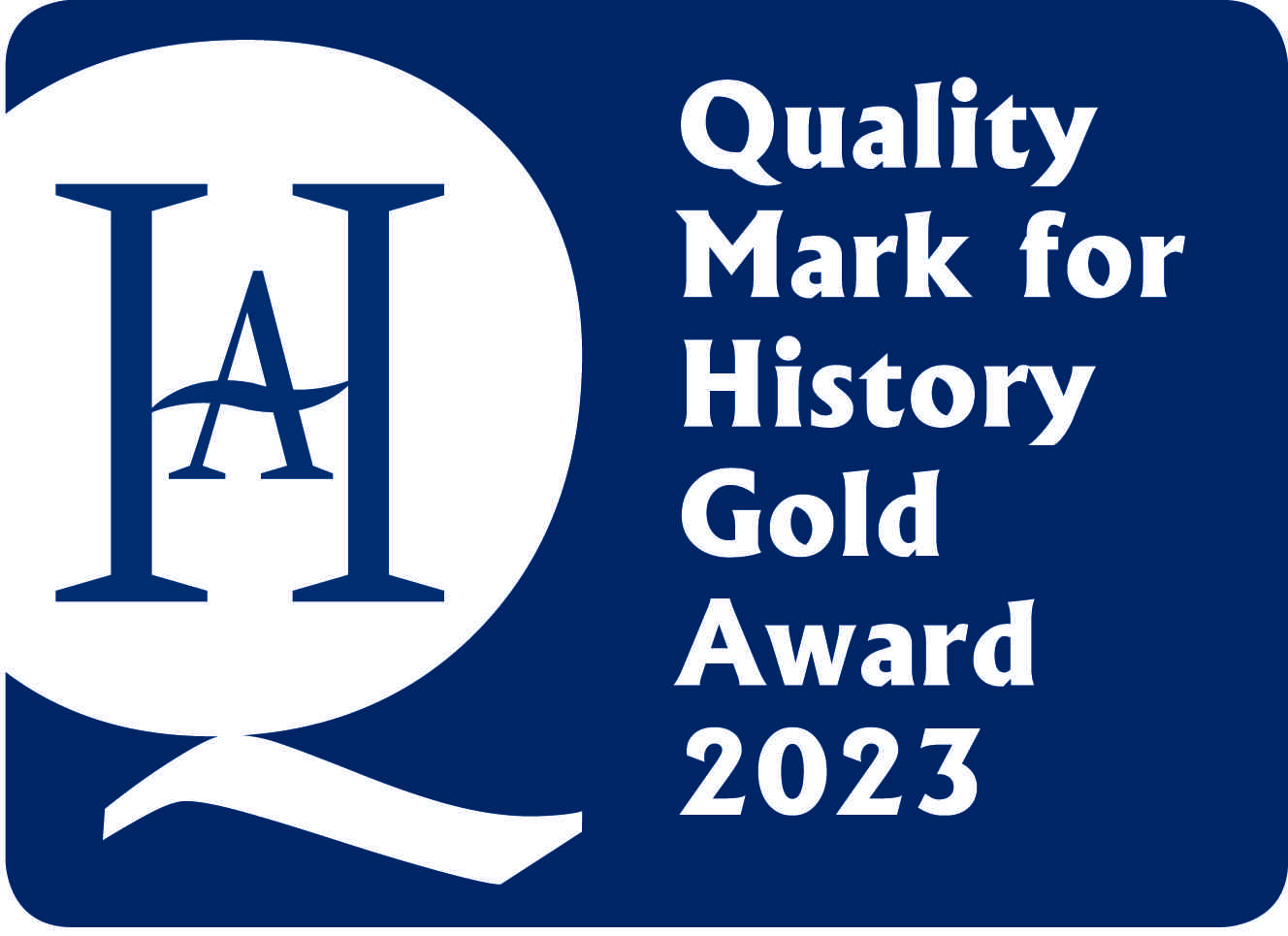



Learning Links
(History & Geography)
Intent
Our Learning Links curriculum is designed to balance knowledge, skills, experiences and opportunities to apply learning in a variety of interconnected contexts. We use a holistic approach which includes history and geography. The curriculum is underpinned by the school’s values and ethos.
Access to the Learning Links curriculum is adapted to suit the needs of the children given the context of the school. Children’s learning in EYFS and KS1 has a strong focus on early acquisition of language, phonics and reading, yet this is primarily done through quality first teaching in an inclusive way. Throughout school, children work in mixed ability groups, learning from a variety of models. Teaching vocabulary is a priority in school and links directly to the school’s context. MTPs have tier 1, 2 and 3 vocabulary included, as well as a vocabulary mats / knowledge organisers for the children to use within that topic. Tier 1 are common words which children pick up through everyday conversation. Tier 2 are words that are useful and that appear across different areas of the curriculum but might not experience every day. Tier 3 words are subject specific. Vocabulary is an important part of our school development plan. English is a second language for the majority of our children which means that we need to expose them to a wider range of vocabulary and develop their understanding.
Medium term plans are clear and with explicit age related expectations (ARE) for each year group. They are carefully structured based upon NC objectives, knowledge and the inclusion of skills to ensure end goals are clear and that progression is measurable from Reception to year 6.
The learning in Learning Links is enquiry led by the children. Teachers ask key questions to ascertain children’s prior knowledge as a baseline activity; the children experience a WOW introductory lesson to the unit of work exciting the children, but also providing them with a summary of what the unit of work is about. Having experienced this session, the teacher then asks the pupils what they would like to learn about in more detail. The children’s questions then lead the teacher’s planning and the sequence of lessons within that topic.
The creative history approach to learning is inclusive and holistic whereby the medium, chosen by the child, demonstrates that their learning is personal to them. The purpose of creative history is to provide different practical experiences that enable all children to showcase their knowledge independently. The teacher is the facilitator, encouraging children to deepen their understanding through questing.
Cultural capital is a priority within school. School has a personalised list of ’11 things to do before 11’ which include various visits and experiences to enhance later life. (Nursery –picnic in the park, Reception – visit to the farm, year 1- visit to the zoo, year 2- visit to the seaside, year 3 – build a den, year 4- theatre experience, year 5 – star gazing, year 6 –adventurous activity day). Links with Bolton Museum, visitors and other visits related to history and geography are also provided. All children have access to extra-curricular clubs, with priority being given to disadvantaged pupils.
The literacy spine in English is varied and engaging. Teachers choose texts which are linked to other curricular areas, providing cross curricular links to further develop knowledge and allow for application of skills.
We are a Rights Respecting school and follow the United Nations Convention on the Rights of the Child (UNCRC). This convention is a universally agreed set of non-negotiable standards and obligations, built on varied legal systems and cultural traditions. These basic standards also known as human rights, set minimum entitlements and freedoms that are respected and put into effect by governments. The 42 articles on the rights of the child are founded on respect for the dignity and worth of every individual regardless of ethnicity, gender, language, religion, opinions, origins, wealth, ability or any other status, and therefore, apply to every human being everywhere.
Overview
|
Year |
Autumn 1 |
Autumn 2 |
Spring 1 |
Spring 2 |
Summer 1 |
Summer2 |
|
1 |
British history
|
Local history
|
Geography
|
Geography
|
British history
|
Geography
|
|
2 |
Geography
|
British history
|
British history
|
Local history
|
Geography
|
Geography
|
|
3 |
Geography
|
British history
|
Geography
|
Ancient history
|
Local history
|
Geography
|
|
4 |
British history
|
Geography
|
Ancient history
|
Geography
|
Local history
|
Geography
|
|
5 |
Geography
|
Local history
|
Ancient history
|
Geography
|
Geography
|
British history
|
|
6 |
Geography
|
British history
|
Geography
|
Local history
|
Geography
|
Ancient history
|
Implementation
Teaching is led by the children’s prior knowledge and questions of what they want to investigate further within the topic. Every attempt is made to bring history and geography to life. We place an emphasis on examining artefacts and primary sources. In each key stage we give children the opportunity to visit sites of historical and geographical significance and invite visitors to come into the school and talk about their experiences of events in the past and in our local community. We focus on helping children understand that events can be interpreted in different ways, providing opportunities for purposeful discussions and the development of reasoning skills. There is progression of both knowledge and skills for all four subject areas, which is clearly evidenced in children’s books and learning journeys. Learning opportunities are driven by expected ARE or more challenging learning objectives (mastery).
WOWs and Reflections: A WOW event is planned at the start of a topic to engage and excite the children. It provides a starting point from which the children will then generate questions. Reflections of learning are end of topic opportunities to learn alongside families. These are opportunities for children to demonstrate their understanding in a variety of ways. These include performances, galleries, museums, fashion shows, market stalls and much more. In doing this, we are ensuring that children are able to embed knowledge and skills and recall them over time.
Creative History: One history topic within each year group is to be delivered using a holistic approach. Teachers will facilitate children’s learning and provide them with a range of opportunities to demonstrate their understanding. There are a range of activities to suit all learners. These include, but are not limited to: painting, sketching, junk modelling, clay, role play, construction, dance, green screen, research, reading and digital media. Evidence will be gained through 1:1 dialogue with the teacher during every lesson. This is to check knowledge understanding and what the children can do with their knowledge. These will be kept in a learning journey to show the children’s development of knowledge and skills. Creative history museums are an opportunity to share and demonstrate their understanding to their peers and families. Children display their creations from over the half term and take ownership of their event. They take on the role of an expert guide within the ‘museum’ and confidently impart their knowledge to visitors, which include families, governors and peers.
Outdoor Learning: Teachers use outside facilities to enhance the learning experience for all children. This includes a stage area, outdoor classrooms, allotment, pond and large tables. There is also a timeline of British history and a compass to aid the children’s independent learning. Our forest schools activities enhance the children’s learning and bring the topics to life. Activities include den building, fire pit experience, use of tools and conservation of nature.
Monitoring and Evaluation: The Learning Links curriculum team monitor the subject throughout the school year. All monitoring is triangulated, including evidence in books, learning journeys, teaching, pupil voice, progression over time and planning. The work of the subject leaders also involves supporting colleagues through peer coaching in the teaching of history and geography, being informed about current developments in the subject, and providing a strategic lead and direction for the subject in the school. Learning walks take place to identify through first hand evidence the quality of teaching in lessons, and the generation of purposeful learning environments. The quality of working walls is monitored, including the incorporation and use of rich vocabulary. Children will be invited to discuss their learning as part of a pupil voice exercise. This checks children are retaining knowledge alongside acquiring skills to apply in cross-curricular contexts.
Assessment: We assess children’s work by making informal judgements as we observe them during each lesson. On completion of a piece of work, the children complete 3 key questions independently to assess the knowledge and understanding from that lesson. The teacher then marks the work and asks a challenge question to deepen understanding. Where appropriate, these challenge questions will focus on making links and comparisons to embed the children’s knowledge and understanding. Every child has targets in the front of their books showing coverage and skills that will be achieved by the end of the year. Teachers will highlight as they are achieved. At the end of a unit of work, teachers complete an assessment tracker by highlighting targets that have been taught during the half term. They identify the children as being emerging, developing or secure within the year groups, using # to show the depth of understanding.
CPD: Teachers are supported throughout the year as part of monitoring, inset days and peer coaching. Monitoring and data analysis highlights gaps and areas where teachers need support. This is then discussed with the teacher in a supportive manner and steps for progress are agreed. Whole school curriculum day allows subject leaders to celebrate as well as to share expectations and goals, including training opportunities and all necessary resources. External training is also offered to all staff, including subject leadership for members of the curriculum teams.
Impact
The impact is clear as assessment shows evidence of progression, knowledge and skills learnt by the children. The curriculum offers a breadth of experiences and cultural capital. The monitoring of impact in learning links incorporates many approaches. These include:
- Vulnerable Group GAP Analysis: Teacher assessment is analysed and put together as part of a whole school summary of performance at age related expectations for key vulnerable groups that match the priorities of the school. Data from each class is analysed and used to inform future planning if a key group is underperforming.
- Quality Marks: We recognise the value of quality marks and use them to raise the profile of all parts of the Learning Links curriculum. A structure is provided which allows us to assess and audit our provision. Quality principles underpin our practice and inform our subject impact plans.
- Curriculum Evaluation: These are completed at the end of each year and inform the following year’s actions plans. A governor’s report is created which is shared at the start of each new year providing a clear position statement.
- Impact Plans: The Learning Links team identify their own curriculum aims based on the School development plan and the end of year evaluation.
- Personalised Target Setting: Target sheets are in the front of each child’s book. Two targets are identified for each topic and teachers highlight once they have been achieved.




